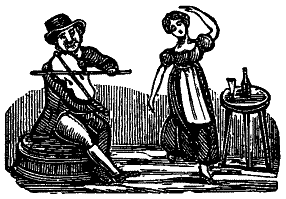Ehime University course support page.

Course materials for some Ehime University courses in the Faculty of Law and Letters.
 Folk Music 2019
Folk Music 2019
Schedule
- Hard Time Getting Here?: Man of Constant Sorrow vs. Wayfaring Stranger (4.9)
- "Man of Constant Sorrow" [wiki]
- Soggy Bottom Boys from O Brother Where Art Thou [Y]
- Alison Krauss and Union Station [YV]
- Bob Dylan [Y]
- Emry Arthur 1928 [Y]
- "Wayfaring Stranger" [wiki]
- Johnny Cash [Y]
- Rhiannon Giddens [YV]
- Jack White from the film Cold Mountain [Y]
- Mormon Tabernacle Choir [YV]
- JD Sumner [YV]
- "Blackwater Side"
- Anne Briggs YouTube audio
- Sandy Denny YouTube audio
- Briggs / Jansch liveYouTube
- Wikipedia
- Yes, you can run away with a gypsy boy and be happy (12.8 Friday)
- "The Raggle Taggle Gypsy" (Wikipedia), "Gypsy Davy" etc (Mainly Norfolk)
"Johny Faa, The Gypsie Laddie," Tea-Table Miscellany (1740) [IA] (earliest printed)
- Carter Family (YouTube) ["Black Jack David"]
- Fotheringay / Sandy Denny (YouTube live) ["Gypsy Davey"]
- Fay Hield (YouTube live) ["Blackjack Davey"]
- The White Stripes (YouTube), (Live1) (Live2) ["Black Jack Davey"]
- Wikipedia:
- American folk music; Carter Family
- American folk music revival;
- British folk revival;
- British folk rock; Sandy Denny; Fotheringay
- The White Stripes; Fay Hield
- Romani people
- But don't try it at home
- "Matty Groves" / "Little Musgrave"
- Wikipedia
- Nic Jones (YouTube audio), "Little Musgrave"
- Fairport Convention (YouTube audio) "Matty Groves" [with Denny, 1969]
- Fairport Convention (YouTube live 2012) "Matty Groves"
- Moriarty (YouTube) "Matty Groves"
- Sovay (Wiki) (Norfolk), "Sylvia's Request and William's Denial," (Bodleian)
- Martin Carthy (YouTube live 1989)
- Pentangle (YouTube audio 1968)
- Jack Monroe
- Wikipedia
- Dramatic Mirror 1842 version
- Jack-A-Roe
- Joan Baez YouTube audio
- The Grateful Dead
- Oakland Auditorium 1980 YouTube (acoustic)
- Hampton Coliseum 1989 YouTube (electric)
- The Water is Wide / 広い河の岸辺
- Wikipedia English / Japanese
- Kumiko YouTube / 「マッサン」朝ドラのエリーが歌う / karaoke!
- YouTube: James Taylor / Sheryl Crow / Indigo Girls, Jewel, Sarah McLachlan / Among the Oak and Ash
- YouTube audio: Joan Baez / Karla Bonoff / Cowboy Junkies
- Waly Waly
- June Tabor YouTube audio
- Francis James Child, English and Scottish Popular Ballads ("Jamie Douglas")
- Carrickfergus
- Wikipedia
- Dominic Behan, "The Kerry Boat Song" (YouTube audio)
- Van Morrison (YouTube audio)
- Celtic Woman (YouTube video)
- Clancy Brothers & Tommy Makem (YouTube video)
- [6/20 class cancelled]
Schedule notes:
Description (from syllabus)
British and American popular music are still strongly connected to traditional folk music (in Japanese: 民謡 or フォークソング). Traditional folk songs created hundreds of years ago remain popular. Folk music styles are usually simple, involving a single instrument such as an acoustic guitar or perhaps no instrument at all. But song lyrics must be interesting to succeed and survive.
In this class we'll focus on traditional folk songs that have survived the test of time and continue to be performed today, and look at a few examples of contemporary folk music.
We'll spend about three-quarters of the course on traditional folk songs, and a quarter on contemporary folk, usually studying one or two or sometimes three songs each class. We'll listen to different versions performed by contemporary musicians. Songs will generally be available on YouTube through a course web page. Students are expected to read the song lyrics and listen to or watch songs online if available. In most cases the required time will be less than an hour a week.
Evaluation
in-class writing and quizzes (30%) class participation (30%), final report (40%)
Students are expected to learn vocabulary and pronunciation, and participate in class discussion
Miscellaneous
Links to previous classes: 2017; 2015
 Folk Music 2019
Folk Music 2019